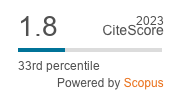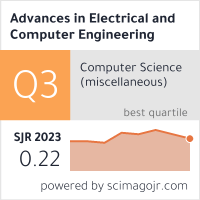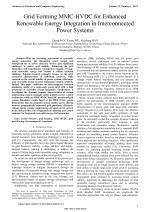| 1/2025 - 1 | View TOC | « Previous Article | Next Article » |
Grid Forming MMC-HVDC for Enhanced Renewable Energy Integration in Interconnected Power SystemsFAN, Z. |
| Extra paper information in |
| Click to see author's profile in |
| Download PDF |
Author keywords
inverter, grid forming, MMC-HVDC, grid partitioning, electromagnetic transients
References keywords
power(24), grid(22), energy(15), forming(13), systems(10), control(9), stability(7), current(7), system(6), storage(6)
Blue keywords are present in both the references section and the paper title.
About this article
Date of Publication: 2025-02-28
Volume 25, Issue 1, Year 2025, On page(s): 3 - 10
ISSN: 1582-7445, e-ISSN: 1844-7600
Digital Object Identifier: 10.4316/AECE.2025.01001
SCOPUS ID: 86000281409
Abstract
With the increasing penetration of renewable energy generation, the fluctuating power output and widespread use of power electronic devices pose significant challenges to power grid stability. Enhancing the grid integration and long-distance transmission capacity of large-scale renewable energy has become a critical technical challenge. Existing research primarily focuses on the grid-connected characteristics of individual inverters, while research on the overall stability of power systems with large-scale renewable energy inverter integration remains relatively limited. This paper establishes an electromagnetic transient simulation model of a large-scale power grid with a high proportion of renewable energy integration. Furthermore, it investigates the dynamic response characteristics of various grid-forming control strategies under unified inverter control architecture within an MMC-HVDC based DC partitioned grid system. Simulation results based on the IEEE 39-bus system demonstrate that the proposed system enables power sharing between geographically separated grid partitions, effectively reduces energy storage requirements and short-circuit current levels, and provides a novel approach for planning and control strategies for large-scale renewable energy grid integration. |
| References | | | Cited By «-- Click to see who has cited this paper |
| [1] E. Rokrok, T. Qoria, A. Bruyere, B. Francois and X. Guillaud, "Transient stability assessment and enhancement of grid-forming converters embedding current reference saturation as current limiting strategy," IEEE Trans. Power Syst., vol. 37, no. 2, pp. 1519-1531, Mar. 2022. [CrossRef] [Web of Science Times Cited 113] [SCOPUS Times Cited 186] [2] Y. Lin, G.-S. Seo, S. Vijayshankar, B. Johnson and S. Dhople, "Impact of increased inverter-based resources on power system small-signal stability," in 2021 IEEE Power & Energy Society General Meeting (PESGM), Washington, DC, USA: IEEE, Jul. 2021, pp. 01-05. [CrossRef] [Web of Science Times Cited 2] [SCOPUS Times Cited 11] [3] X. Li, D. Hui and X. Lai, "Battery energy storage station (BESS)-Based Smoothing Control of Photovoltaic (PV) and wind power generation fluctuations," IEEE Trans. Sustain. Energy, vol. 4, no. 2, pp. 464-473, Apr. 2013. [CrossRef] [Web of Science Times Cited 644] [SCOPUS Times Cited 853] [4] Z. Zhang, T. Ding, Q. Zhou, Y. Sun, M. Qu, Z. Zeng, Y. Ju, L. Li, K. Wang, F. Chi, "A review of technologies and applications on versatile energy storage systems," Renewable and Sustainable Energy Reviews, vol. 148, p. 111263, Sep. 2021. [CrossRef] [Web of Science Times Cited 289] [SCOPUS Times Cited 359] [5] M. M. Rana, M. Uddin, M. R. Sarkar, S. T. Meraj, G. M. Shafiullah, S. M. Muyeen, M. A. Islam, T. Jamal. "Applications of energy storage systems in power grids with and without renewable energy integration - A comprehensive review," Journal of Energy Storage, vol. 68, p. 107811, Sep. 2023. [CrossRef] [Web of Science Times Cited 112] [SCOPUS Times Cited 144] [6] A. R. Dehghani-Sanij, E. Tharumalingam, M. B. Dusseault and R. Fraser, "Study of energy storage systems and environmental challenges of batteries," Renewable and Sustainable Energy Reviews, vol. 104, pp. 192-208, Apr. 2019. [CrossRef] [Web of Science Times Cited 585] [SCOPUS Times Cited 665] [7] R. Hidalgo-Leon et al., "A survey of battery energy storage system (BESS), applications and environmental impacts in power systems," in 2017 IEEE Second Ecuador Technical Chapters Meeting (ETCM), Salinas: IEEE, Oct. 2017, pp. 1-6. [CrossRef] [SCOPUS Times Cited 62] [8] H. Li, C. Nie and F. Wang, "Grid strengthening IBR: An inverter-based resource enhanced by a co-located synchronous condenser for high overcurrent capability," IEEE Open J. Power Electron., vol. 3, pp. 535-548, 2022. [CrossRef] [Web of Science Times Cited 7] [SCOPUS Times Cited 12] [9] D. Al Kez, A. M. Foley, F. Ahmed and D. J. Morrow, Overview of frequency control techniques in power systems with high inverter based resources: Challenges and mitigation measures," IET Smart Grid, vol. 6, no. 5, pp. 447-469, Oct. 2023. [CrossRef] [Web of Science Times Cited 24] [SCOPUS Times Cited 31] [10] R. H. Lasseter, Z. Chen and D. Pattabiraman, "Grid-forming inverters: A critical asset for the power grid," IEEE J. Emerg. Sel. Topics Power Electron., vol. 8, no. 2, pp. 925-935, Jun. 2020. [CrossRef] [Web of Science Times Cited 385] [SCOPUS Times Cited 598] [11] D. Ramasubramanian, W. Baker, J. Matevosyan, S. Pant and S. Achilles, "Asking for fast terminal voltage control in grid following plants could provide benefits of grid forming behavior," IET Generation Transmision & Distribution, vol. 17, no. 2, pp. 411-426, Jan. 2023. [CrossRef] [Web of Science Times Cited 10] [SCOPUS Times Cited 11] [12] D. Pattabiraman, R. H. Lasseter and T. M. Jahns, "Comparison of grid following and grid forming control for a high inverter penetration power system," in 2018 IEEE Power & Energy Society General Meeting (PESGM), Portland, OR: IEEE, Aug. 2018, pp. 1-5. [CrossRef] [SCOPUS Times Cited 200] [13] Y. Li, Y. Gu and T. C. Green, "Revisiting grid-forming and grid-following inverters: A duality theory," IEEE Trans. Power Syst., vol. 37, no. 6, pp. 4541-4554, Nov. 2022. [CrossRef] [Web of Science Times Cited 209] [SCOPUS Times Cited 351] [14] Md. M. Islam, K. M. Muttaqi, D. Sutanto, Md. M. Rahman and O. Alonso, "Design of a controller for grid forming inverter-based power generation systems," IEEE Access, vol. 11, pp. 55755-55770, 2023. [CrossRef] [Web of Science Times Cited 6] [SCOPUS Times Cited 13] [15] M. Lu, "Virtual oscillator grid-forming inverters: State of the art, modeling, and stability," IEEE Trans. Power Electron., vol. 37, no. 10, pp. 11579-11591, Oct. 2022. [CrossRef] [Web of Science Times Cited 36] [SCOPUS Times Cited 65] [16] B. Pawar, E. Batzelis, S. Chakrabarti and B. Pal, "Grid-forming control for solar PV systems with power reserves," IEEE Trans. Sustain. Energy, vol. 12, no. 4, pp. 1947-1959, Oct. 2021. [CrossRef] [Web of Science Times Cited 81] [SCOPUS Times Cited 127] [17] Q. Hu et al., "Grid-forming inverter enabled virtual power plants with inertia support capability," IEEE Trans. Smart Grid, vol. 13, no. 5, pp. 4134-4143, Sep. 2022. [CrossRef] [Web of Science Times Cited 83] [SCOPUS Times Cited 121] [18] W. Du, F. K. Tuffner, K. P. Schneider, R. H. Lasseter, J. Xie, Z. Chen, B. P. Bhattarai, "Modeling of grid-forming and grid-following inverters for dynamic simulation of large-scale distribution systems," IEEE Trans. Power Delivery, vol. 36, no. 4, pp. 2035-2045, Aug. 2021. [CrossRef] [Web of Science Times Cited 142] [SCOPUS Times Cited 220] [19] D. Yang and Y. Sun, "SISO impedance-based stability analysis for system-level small-signal stability assessment of large-scale power electronics-dominated power systems," IEEE Trans. Sustain. Energy, vol. 13, no. 1, pp. 537-550, Jan. 2022. [CrossRef] [Web of Science Times Cited 45] [SCOPUS Times Cited 62] [20] Z. Zhou and V. Dinavahi, "Parallel massive-thread electromagnetic transient simulation on GPU," in 2015 IEEE Power & Energy Society General Meeting, Denver, CO, USA: IEEE, Jul. 2015, pp. 1-1. [CrossRef] [21] J. K. Debnath, A. M. Gole and W.-K. Fung, "Graphics-processing-unit-based acceleration of electromagnetic transients simulation," IEEE Trans. Power Delivery, vol. 31, no. 5, pp. 2036-2044, Oct. 2016. [CrossRef] [Web of Science Times Cited 19] [SCOPUS Times Cited 21] [22] Y. Song, Y. Chen, S. Huang, Y. Xu, Z. Yu and J. R. Marti, "Fully GPU-based electromagnetic transient simulation considering large-scale control systems for system-level studies," IET Generation, Transmission @ Distribution, vol. 11, no. 11, pp. 2840-2851, Aug. 2017. [CrossRef] [Web of Science Times Cited 23] [SCOPUS Times Cited 33] [23] L. Huang, H. Xin, Z. Wang, L. Zhang, K. Wu and J. Hu, "Transient stability analysis and control design of droop-controlled voltage source converters considering current limitation," IEEE Trans. Smart Grid, vol. 10, no. 1, pp. 578-591, Jan. 2019. [CrossRef] [Web of Science Times Cited 331] [SCOPUS Times Cited 510] [24] T. Qoria, F. Gruson, F. Colas, G. Denis, T. Prevost and X. Guillaud, "Critical clearing time determination and enhancement of grid-forming converters embedding virtual impedance as current limitation algorithm," IEEE J. Emerg. Sel. Topics Power Electron., vol. 8, no. 2, pp. 1050-1061, Jun. 2020. [CrossRef] [Web of Science Times Cited 138] [SCOPUS Times Cited 193] [25] E. Rokrok, T. Qoria, A. Bruyere, B. Francois and X. Guillaud, "Transient stability assessment and enhancement of grid-forming converters embedding current reference saturation as current limiting strategy," IEEE Trans. Power Syst., vol. 37, no. 2, pp. 1519-1531, Mar. 2022, [CrossRef] [Web of Science Times Cited 113] [SCOPUS Times Cited 186] [26] B. Johnson et al., "A generic primary-control model for grid-forming inverters: Towards interoperable operation & control," presented at the Hawaii International Conference on System Sciences, 2022. [CrossRef] Web of Science® Citations for all references: 3,397 TCR SCOPUS® Citations for all references: 5,034 TCR Web of Science® Average Citations per reference: 126 ACR SCOPUS® Average Citations per reference: 186 ACR TCR = Total Citations for References / ACR = Average Citations per Reference We introduced in 2010 - for the first time in scientific publishing, the term "References Weight", as a quantitative indication of the quality ... Read more Citations for references updated on 2025-06-03 11:32 in 176 seconds. Note1: Web of Science® is a registered trademark of Clarivate Analytics. Note2: SCOPUS® is a registered trademark of Elsevier B.V. Disclaimer: All queries to the respective databases were made by using the DOI record of every reference (where available). Due to technical problems beyond our control, the information is not always accurate. Please use the CrossRef link to visit the respective publisher site. |
Faculty of Electrical Engineering and Computer Science
Stefan cel Mare University of Suceava, Romania
All rights reserved: Advances in Electrical and Computer Engineering is a registered trademark of the Stefan cel Mare University of Suceava. No part of this publication may be reproduced, stored in a retrieval system, photocopied, recorded or archived, without the written permission from the Editor. When authors submit their papers for publication, they agree that the copyright for their article be transferred to the Faculty of Electrical Engineering and Computer Science, Stefan cel Mare University of Suceava, Romania, if and only if the articles are accepted for publication. The copyright covers the exclusive rights to reproduce and distribute the article, including reprints and translations.
Permission for other use: The copyright owner's consent does not extend to copying for general distribution, for promotion, for creating new works, or for resale. Specific written permission must be obtained from the Editor for such copying. Direct linking to files hosted on this website is strictly prohibited.
Disclaimer: Whilst every effort is made by the publishers and editorial board to see that no inaccurate or misleading data, opinions or statements appear in this journal, they wish to make it clear that all information and opinions formulated in the articles, as well as linguistic accuracy, are the sole responsibility of the author.



